After Monemvasia, we drove westwards to the Mani region of the Peloponnese. Mani is a peninsula within Peloponnese peninsula, on the west side of Peloponnese. The locals are called Maniots and are descendants of the Spartans, whose military might was unmatched in Greece during 650BC times.

Our stop for lunch was at Neo Itlio a small village on the Mani seaside with a nice beach; this area is famous for the stuffed tomatoes and stuffed peppers (Gemista or Yemista); and fresh seafood, of course.


We drove northwards on the Mani peninsula, and drove through multiple small picturesque villages & towns.

We stopped overnight at a very nice (& cheap) B&B near Rigklia town. The Anaxo Resort was a beautiful villa style hotel, with a pool, and a great view of the sea as it was built on a hillside overlooking the sea. It was quite cheap as they needed the tourist business after Covid.

That evening, we drove to the small town of Agios Nikolas nearby and were convinced by a nice lady to eat dinner at her restaurant (Elli‘s Tavern); which we had intended to go to anyway 😊 based on reviews we had read. Fresh seafood was delicious with locally produced olive oil.

The next day, after a leisurely breakfast, we drove north to the town of Olympia (Archaia Olympia; or Ancient Olympia); located approx. west-center in Peloponnese. To reach Olympia, we drove through the city of Kalamata, which is where the famous Kalamata olives come from.
Some scenes along the drive to Olympia, and in Kardamyli, where we stopped for lunch.









We arrived in Olympia, and found the hotel we had booked the night before; the Hotel Europa Olympia, nice hotel with a great view.

We decided to rest and ate dinner in the hotel; which was very nice with a view

The next day, we went over to vist and check out the original/very first Olympic games site. Some historical background on Olympia first. This site was a major Panhellenic religious sanctuary of ancient Greece, occupied since about 1500 BC, with a religious cult of Zeus (the god of sky and thunder, and the god of gods) developing around 1000 BC. Since the many Greek city states like Athens, Corinth, Delphi, Sparta could not get on with each other and were constantly fighting, the outsiders like the Persians, Romans, etc. found it easy to conquer. So the Greeks decided that holding a set of games every 4 years (Olympiad) would be a good idea to collaborate and even had ceasefires during the times of the games; the idea was to build up comradeships and better understanding of each other between the male participants, who competed naked. Women were not allowed to compete. Each Olympiad started with the holding of the games, which originally began on the first or second full moon after the summer solstice.
So the ancient Olympic Games were held every four years throughout Classical antiquity, from the 8th century BC to the 4th century AD. Since the Greeks tied everything to mythology, the site of the games were right next to the major temple sanctuary; prominently the temple of Zeus, which housed a huge 12m high ivory and gold statue of Zeus; which was regarded as one of the Seven Wonders of the Ancient World.
The first games were held in 776 BC, and it was just one event, the foot race over one length of the stadium (600ft). During this truce or ceasefire, athletes and spectators came from all over Greece; and brought offerings to Zeus, resulting in Olympia becoming a living museum of Greek art and culture. Subsequent games were held every 4 years; and over time, the scope of the games grew; adding many more events; and adding extensions in Olympia to accommodate the increasing number of athletes and spectators. The games also rotated to other major cities in Greece. The winners of the games were not awarded gold, silver, and bronze medals as they are today. Instead, ancient Olympic victors were awarded an olive branch twisted into a circle to form a crown. The wild olive, called kotinos, had deep religious significance for the ancient Greeks. At the ancient Olympics, only the winner was recognized—there were no prizes for runners up. The fines for cheaters were also Olympic sized; cheaters were publicly whipped (a punishment usually reserved for slaves) ; immediately disqualified, and charged a large fine, which was used to pay for a bronze statue of Zeus, with the name of the cheater and a description of his offence displayed at the base of the statue. After a while, there was a road at Olympia lined with these bronze statues.
The last Olympiad was held in 393AD, after which the Roman Christian emperor Theodosius I implemented a ban. The Temple of Zeus was apparently destroyed around 426 AD, during the persecution of pagans in the late Roman Empire, following an edict by Theodosius II enforcing the ban on pagan festivals (which included the Olympic games).
The modern Olympic flame is ignited several weeks before the opening ceremony of the modern Olympic Games at this site of the ancient Olympics. A group of women representing the Vestal Virgins (usually 11 in number) perform a celebration at the Temple of Hera (in Olympia), during which a fire is kindled by the light of the Sun, its rays concentrated by a parabolic mirror. The fire is used to light the first torch of the Olympic Torch Relay. An actress plays the role of the temple’s main priestess and presents the torch and an olive branch to the first relay bearer (usually a Greek athlete who has already qualified to compete in that edition of the Games). The flame is then carried by multiple athletes all the way to the site of the current Olympic games.
We paid our entrance fee (7 Euros each) and toured the ancient Greek temples etc. and then the actual original Olympic stadium. Pictures below






This original simple Olympic stadium is a far cry from the Olympic stadiums of recent years which can hold over 72,000 people (Yokohama city, 2020) and 92,000 (Beijing Winter Olympics 2022)
360 degree view of the first Olympic Stadium

View of the religious sites in Olympia


After a fascinating few hours here under the hot sun, it was time to head to the sea nearby for a cold drink and to chill


We stayed overnight in Olympia, and next day, we drove along the west & north coast of Peloponnese peninsula to the city of Patras; the 3rd largest city of Greece. The core settlement of Patras has a history spanning four millennia. In the Roman period, it had become a cosmopolitan center of the eastern Mediterranean whilst, according to the Christian tradition, it was also the place of Saint Andrew’s martyrdom. The Rio-Antirio Bridge connects Patras’ easternmost suburb of Rio to the town of Antirrio, connecting the Peloponnese peninsula with mainland Greece; which is the reason we had come to Patras, where we had planned to cross back to the Greek mainland.
We arrived in the evening, and checked into the Moxy Patra Marina hotel. We went for dinner to the Banana Moon restaurant and bar, at their rooftop; with a great view of an old Roman Odeon next door.


The night life in the town was quite good, with many pedestrian-only streets with cafes and restaurants filled with diners.
Next day, we explored a little of Patras. Main highlight was the medieval Patras castle, built on the ancient acropolis overlooking the city, was initially built in the 6th century AD by the Byzantine emperor Justinian, having many additions from the period of the Frankish and Venetian rule of the city, up to as far as the time of the Despotate of Morea and later the Ottoman Empire. Some scenes from the Castle and Patras





It was market day, so we had to stop and check out the busy market




After this nice lunch break at the market, it was time to cross the bridge from Peloponnese peninsula back to the Greek mainland. Bridge crossing was 13 Euro charge, which I thought was rather high, given that the ferry across costs half as much. But the bridge was faster.
How did we feel; the 5 senses? Peloponnese is off the busy tourist route, so no tourist hordes and not many locals spoke English, and so it was very nice to walk around and explore ancient history especially Ancient Olympia and the 1st Olympic Stadium; which was the highlight for us. Food was always fresh and excellent, especially the Gemista stuffed peppers and tomatoes. The locals always were helpful especially as they knew we were foreigners and did not speak Greek.
More of the Greek mainland, Ioannina next
Our trip so far

- Agios Nikolas
- Alpheus valley
- Ancient Olympia
- Archaia Olympia
- Greece
- Kakovatos
- Kardamyli
- Mani Peninsula
- Patras
- Peloponnese
- Rigklia
- Valley of the Gods
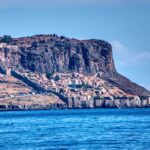

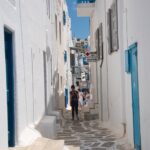
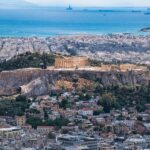

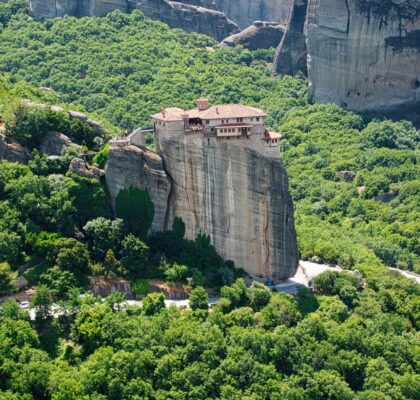
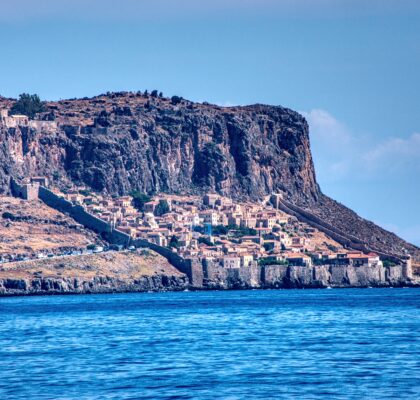
Pingback: Ioannina & Meteora, Greece, June 2021 - Greece
Thanks for sharing. Enjoyed the journey to Greece.
Thanks Badru, for the feedback.
Glad you enjoyed the journey with us
Hi Ali
Such an amazing pictorial. Wow.
I loved the story of Olympia as I luv running. So much history there.
Would Olympia be just 26 miles from Athens as that is how the marathon started?
Mahamud
Thanks Mahamud; glad you enjoyed reading the blog post.
I am not sure where the marathon distance originated from; but Ancient Olympia is actually several hundred kms from Athens, so no connection there 🙂
Wow! The Pictures of Greece are amazing. Its always good to see the local markets and people living their everyday life. You have captured this beautifully.
THanks Shama, for the feedback. Glad you liked the blog.
beautiful, stunning pictures!
Thanks Hamida, glad you enjoyed the blog
Beautiful story!
Glad you enjoyed the journey with us Amir and Roshan.
And thanks for taking the time to provide feedback; much appreciated.
Very interesting and beautiful photos and commentary. Thanks for sharing.
THanks Ismail: glad you enjoyed the blogpost.